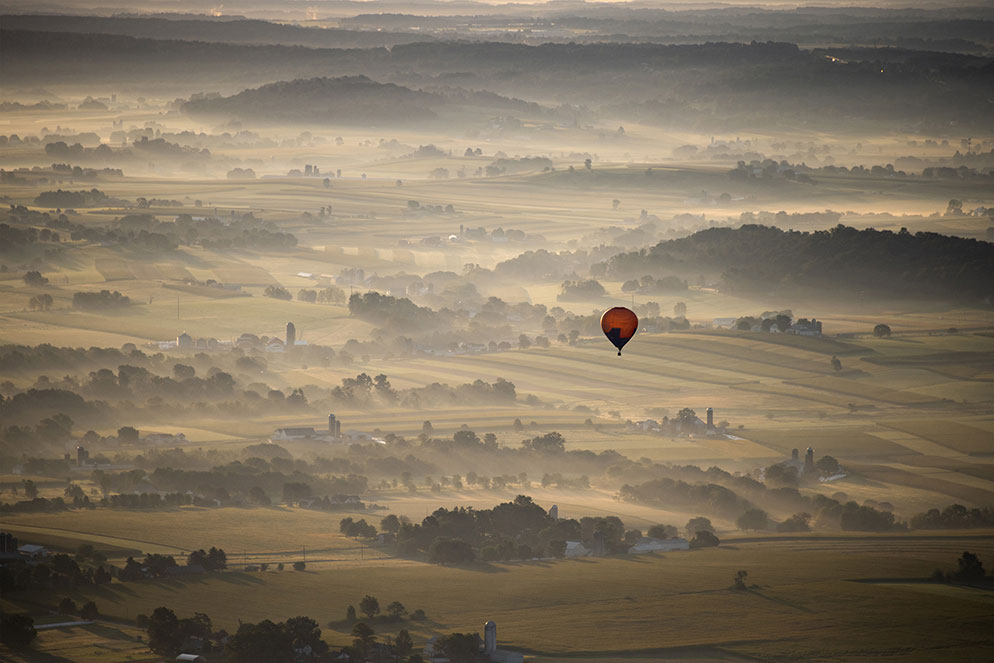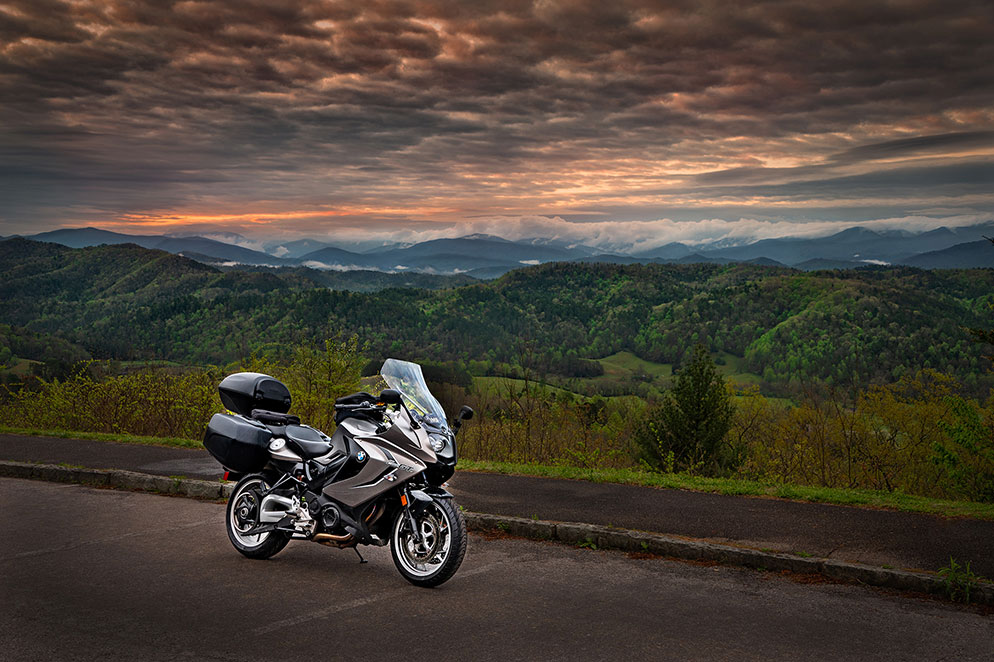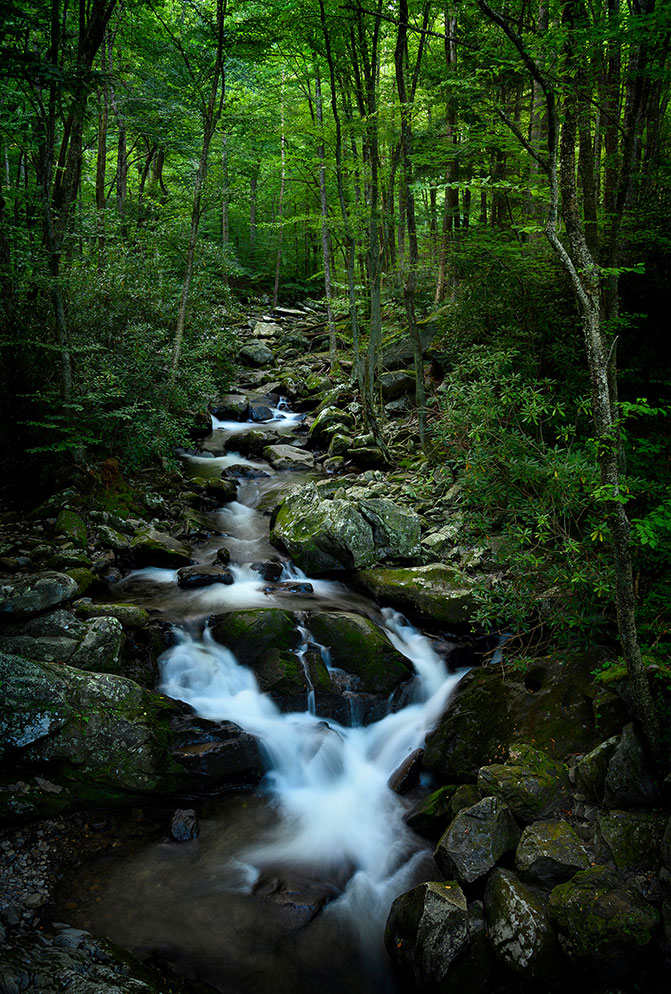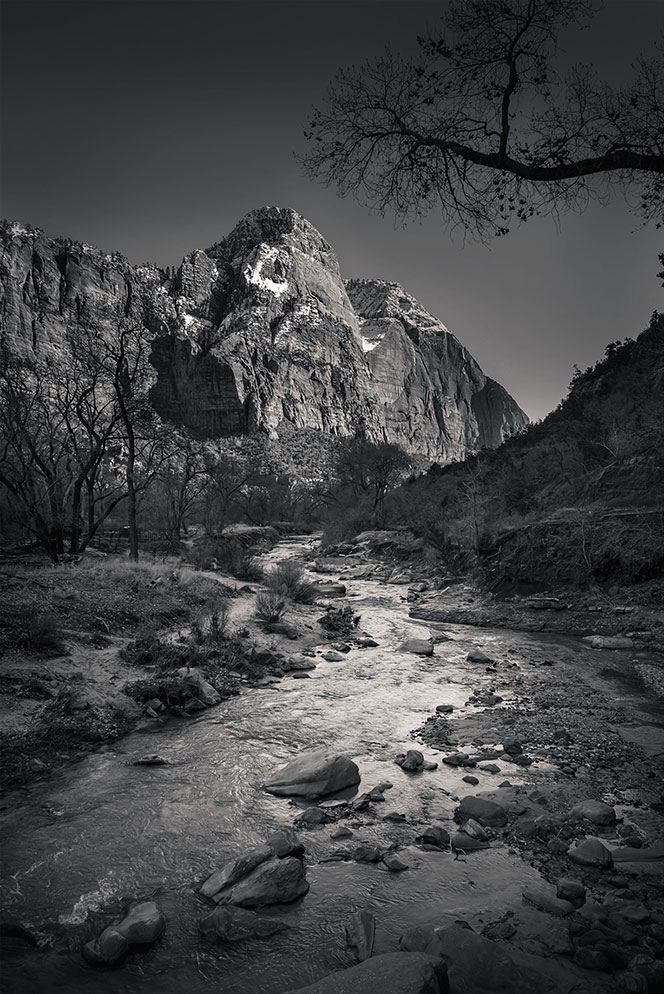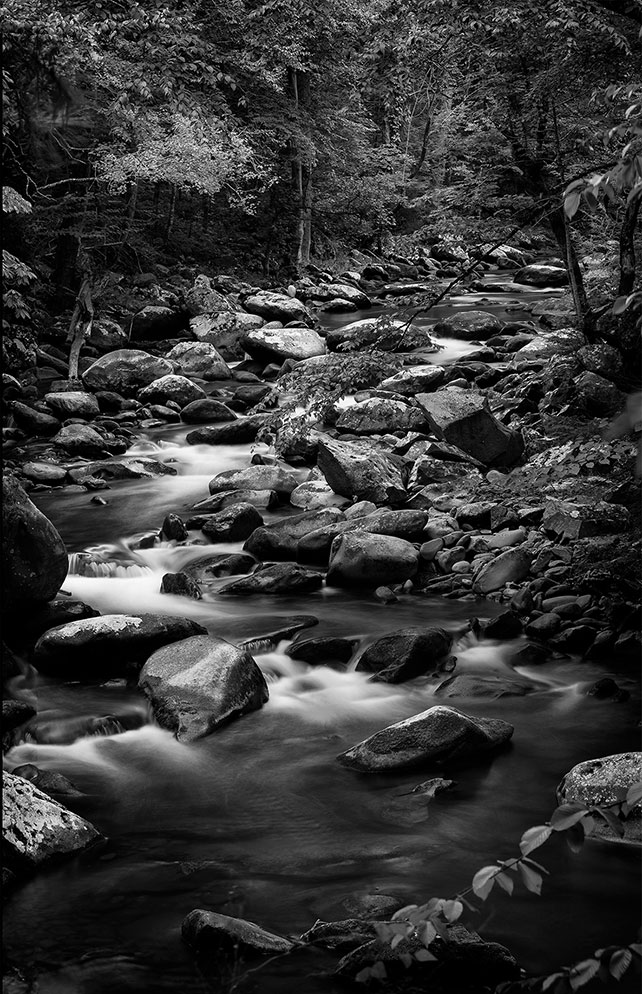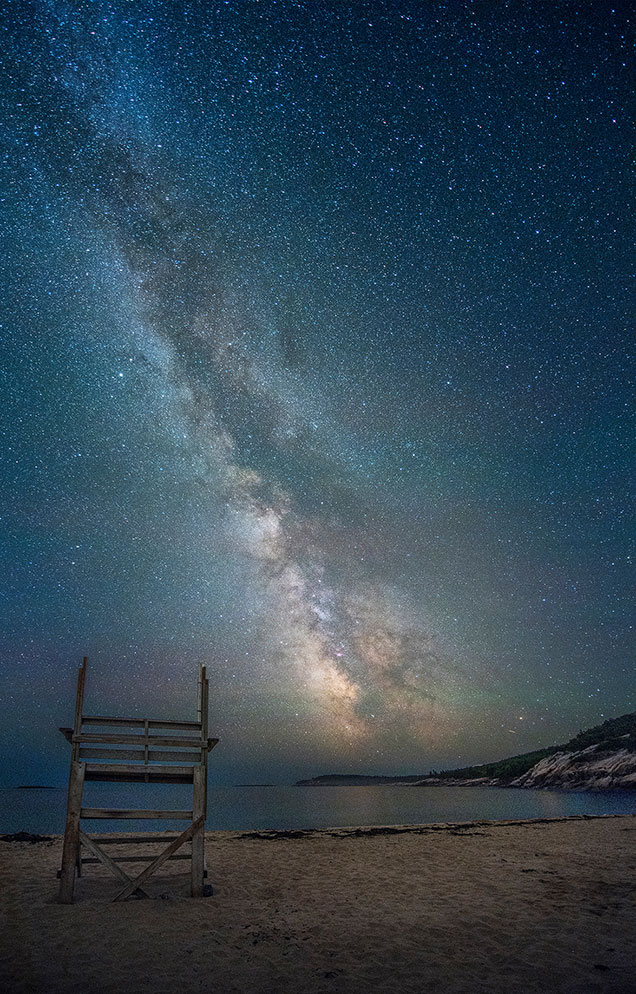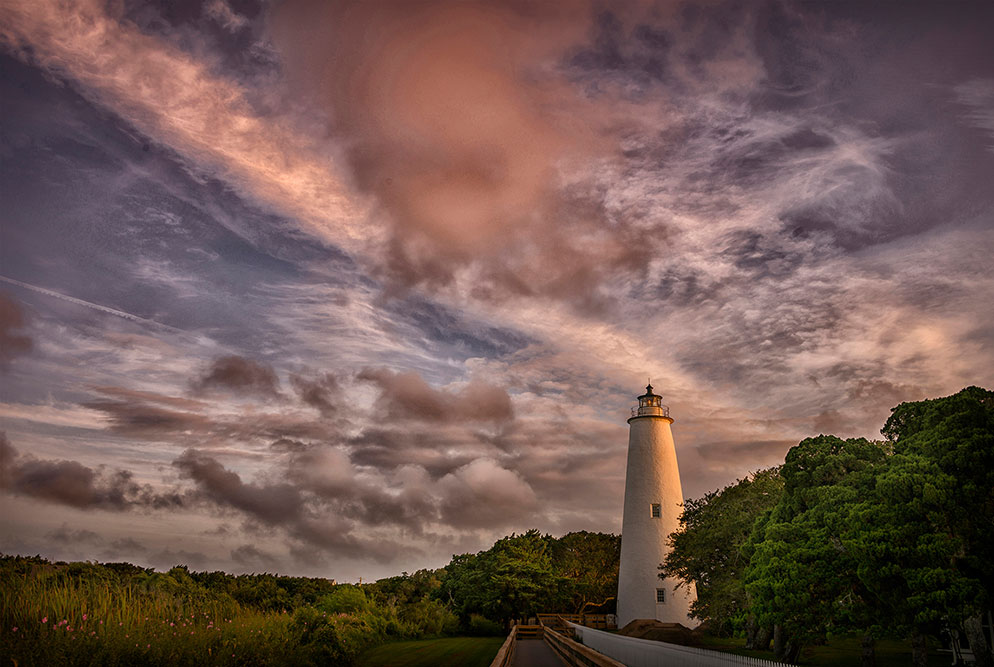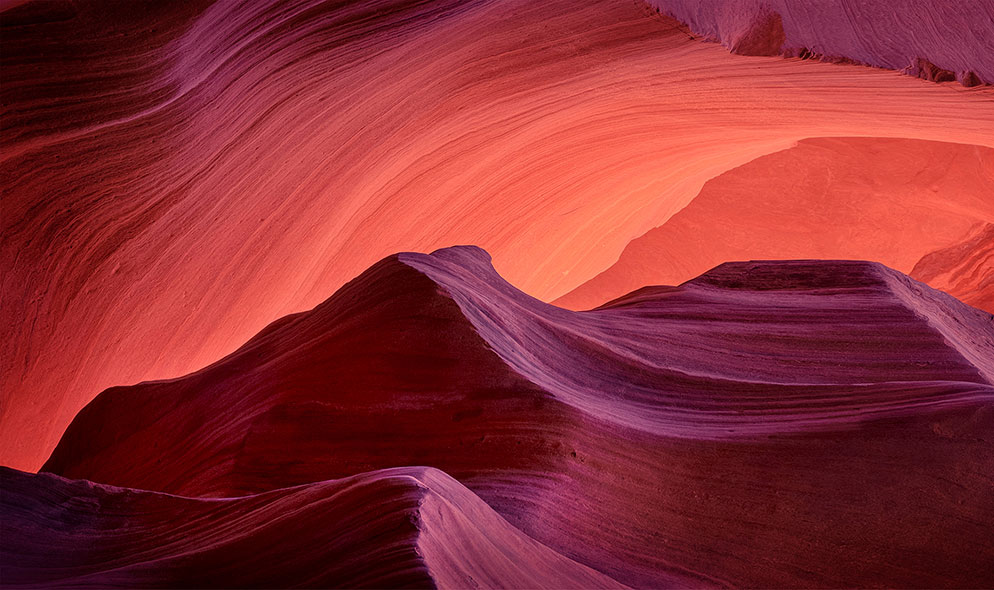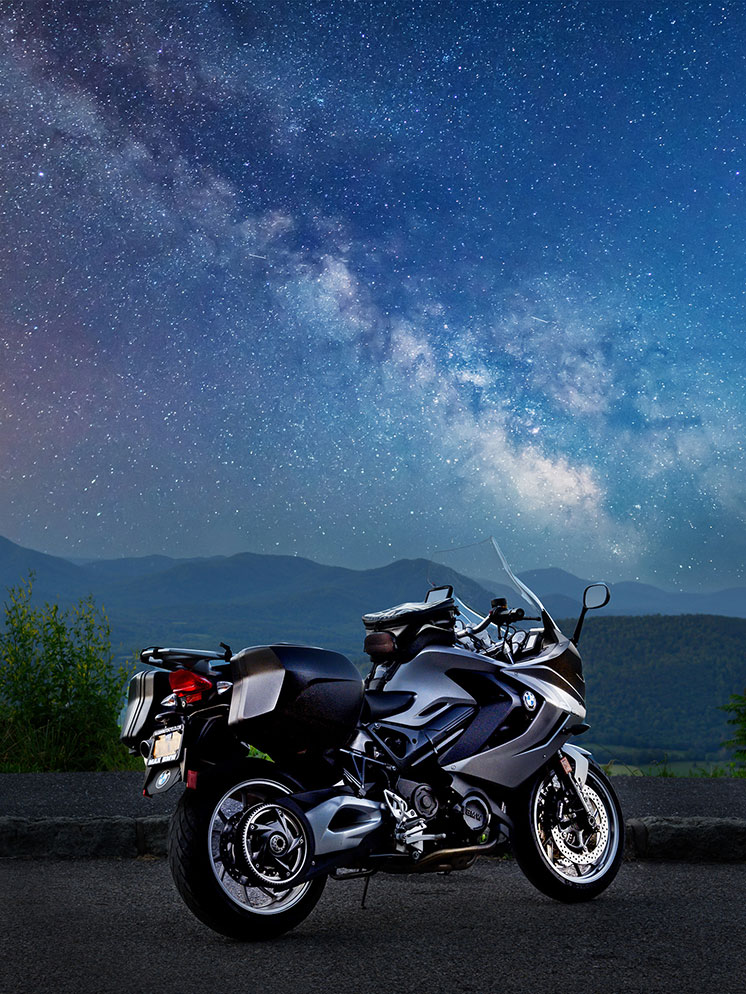A Photographer’s Ongoing Tribute to Travel by Motorcycle
Michael’s motorcycle at sunrise in the Great Smoky Mountains, Tennessee, in an image that he says “truly embodies the spirit of travel photography and traveling by motorcycle.” Thinking back to his days as a wedding photographer, he adds, “I wish I could put a bride and groom in a lot of the scenes I’m photographing now.” Z 6II, AF-S NIKKOR 28-300mm f/3.5-5.6G ED VR, Mount Adapter FTZ, 1/15 second, f/8, ISO 200, manual exposure, Matrix metering.
Michael ONeill is a retired wedding and commercial photographer. He’s also a long-time motorcyclist who did a lot of riding during his four-decade photo career. But—and this might surprise you—a camera wasn’t with him on those travels.
“Riding was an escape from work,” Michael says. “After spending hours in the studio and then out photographing weddings, I didn’t want to look at a camera or think about photography when I hit the road.”
This image, taken over Lancaster County, Pennsylvania, is actually all about the ground. “The morning fog was blanketing the ground, giving it a soft, muted look,” Michael says, “and it needed something that stood out. Without the balloon, it’s just a pretty landscape; with it, the story is about a balloon flight.” Z 7, NIKKOR 28-300mm f/3.5-5.6G ED VR, Mount Adapter FTZ, 1/1000 second, f/5.6, ISO 200, manual exposure, Matrix metering.
That changed when he knew he would be retiring. “I began taking pictures on my travels a couple of years before closing the studio,” he says. “I’d started doing some really serious, long-range motorcycle trips—three, four, five thousand miles, visiting places like Newfoundland, Nova Scotia and Labrador, and for those trips I brought along the camera. When you visit places like that you want to bring a nugget of it back with you.”
These days the nuggets are even more important.
Crossover
The thing about going from commercial to travel photography is that the beauty shot is still the beauty shot. By definition, it captures the best of its subject, no matter if the photographer is at a wedding, in the studio or exploring the backroads. Michael’s shift in subject matter was seamless because the beauty shot was always the goal, and he carried with him experience, dedication and a command of the basics.
“Whatever you’re shooting, the fundamentals of exposure, lighting and composition apply,” he says, “and a strong background in the fundamentals is what I brought to the new travel pursuit. That, and seeing in the last couple of years of my wedding photography the influence of younger photographers and their emphasis on locations. They were photographing wedding couples on the Great Wall of China and beneath the Northern Lights in Iceland. If I were still a wedding photographer, I would bring my couples back to the places I’m visiting now.”
Michael sees this stream, in Great Smoky Mountains National Park, as “another kind of road,” one that you’re invited to follow to find the source, making the photograph an image of the allure of adventure and exploration. “By the way,” Michael adds, “Tennessee and North Carolina are both motorcycle heavens—two of the finest places to ride a bike.” Z 7, AF-S NIKKOR 28-300mm f/3.5-5.6G ED VR, Mount Adapter FTZ, 2 seconds, f/5.6, ISO 64, manual exposure, Matrix metering.
For this sunrise photo, taken in Groffdale, Pennsylvania, patience was paramount. “I had the intense storm clouds, I chose my spot and framed the image, and then I waited. It was Sunday, and I knew this road would be traveled by Amish buggies after church services, and when one got to the exact spot I wanted, I was ready.” Z 7, NIKKOR Z 14-30mm f/4 S, 1/2000 second, f/5.6, ISO 100, manual exposure, Matrix metering.
In addition to his experience and skill, Michael’s evocative images of the highways, byways and whatever catches his eye and interest along the way are the result of observation, curiosity and the very nature of the ride itself. “Travel by motorcycle is an entirely different than travel any other way,” he says. “Get on an airplane and your mission is to get from point A to point B as quickly as possible. On a motorcycle, the actual ride is what it’s about. I can take a trip up into the Green Mountains of Vermont by automobile in three hours, but I spent about eight-and-a-half hours on the motorcycle doing it because the adventure is in the riding, not the arriving. I had a basic idea of what roads I was going to take, but no real itinerary, and if something looked interesting, I’d take a turn and explore some backroads.” Maybe he’d run out of pavement and find himself on a dirt or gravel track, but he’d also find himself in spots few others get to see. “You can find extraordinary landscapes just by making the journey the focus of your day,” Michael says. The personal payoff is that with his photographs he can tell the story of what those journeys mean to him.
A scene-setter establishing shot, taken in Zion National Park, Utah. “It was late afternoon, and the sun was low in the sky, lighting up the background.” D4S, AF-S NIKKOR 24-70mm f/2.8E ED VR, 1/400 second, f/5.6, ISO 400, manual exposure, Matrix metering.
A different location—Great Smoky Mountains National Park—and a composition that tells a different story than the previous image. This is detailed and more personal, a medium close-up that hints at how isolated an area it is and what it took to get there. Z 7, AF-S NIKKOR 28-300mm f/3.5-5.6G ED VR, Mount Adapter FTZ, 6 seconds, f/11, ISO 64, manual exposure, Matrix metering.
Whatever you’re shooting the fundamentals of exposure, lighting and composition apply, and a strong background in the fundamentals is what I brought to the new travel pursuit.
An in-camera composite of the Milky Way and a weathered lifeguard stand in Acadia National Park, Maine. “My guide knew the Milky Way would reveal itself,” Michael says. “It was the night of the new moon, the darkest night of the month at one of the darkest spots in the U.S.” He shot the Milky Way first, the stand maybe five minutes later. Milky Way: D810A, AF-S NIKKOR 14-24mm f/2.8G ED, 20 seconds, f/2.8, ISO 4000, manual exposure, Matrix metering. Lifeguard stand: same, save for 3.5 minutes at ISO 200.
Sunrise, Ocracoke Island, Outer Banks, North Carolina. “This was on my third trip to the Outer Banks, the first that was successful for photography,” Michael says. “A storm turned me around the first time, fog defeated photography on the second attempt. But this time I devoted an entire day to the lighthouses of the area. There’s even a blog about it on the Roadcraft USA site.” Z 7, AF-S NIKKOR 28-300mm f/3.5-5.6G ED VR, Mount Adapter FTZ, 1/30 second, f/11, ISO 64, manual exposure, Matrix metering.
Back to Business
When we talked with Michael, we discovered that he has his own definition of “retirement,” and it includes a lot more than photography of his travels by bike. Since closing the business he’s been exceptionally active when it comes to his dual passions. He’s established Roadcraft USA, an “online resource” website dedicated to riding and photographing, for which he writes insightfully of journeys taken and photographs created. He’s published a book—Road Work: Images and Insights of a Modern Day Explorer—that combines memoir, travelogue and photography.
“My vision was different from my view,” Michael says of this image, taken in Lower Antelope Canyon in Page, Arizona. Which means the typical vertical view of a slot canyon, with sunlight pouring into a narrow passage, is not what he wanted. Angle the image clockwise about 90 degrees and you’ll see what he saw before he literally turned it into something quite different. “Sort of the appearance of a mountain range with the blazing sun behind it.” D4S, AF-S NIKKOR 24-70mm f/2.8E ED VR, 1/13 second, f/8, ISO 400, manual exposure, Matrix metering.
“I set the website up to be an instructional and inspirational resource for photographers and motorcyclists,” he says, “and I post regularly—‘how I got the shot’ tutorials; road-trip travelogue stories that motorcyclists who are planning trips can look at to find out where to stay, where to eat, what roads to ride; and stories about how I travel by bike, safely and with purpose.”
For Michael one of the pleasures of the journeys and the photographs is that they give him the opportunity to inspire others. Get on a motorcycle and there’s an implied invitation to explore, to follow the road or freely diverge from it. Michael instinctively and gracefully adds a commitment to that invitation: to share in words and photographs the adventure and tell its story.
In this composite the Milky Way, shot from a different vantage point in Acadia National Park, provides the backdrop for Michael’s motorcycle, which was photographed on the Blue Ridge Parkway in Rockfish Gap, Virginia. Milky Way: D810A, AF-S NIKKOR 14-24mm f/2.8G ED, 20 seconds, f/2.8, ISO 4000, manual exposure, Matrix metering. Bike: Z 7, NIKKOR 28-300mm f/3.5-5.6G ED VR, Mount Adapter FTZ, 1/15 second, f/8, ISO 4000, manual exposure, Matrix metering.

